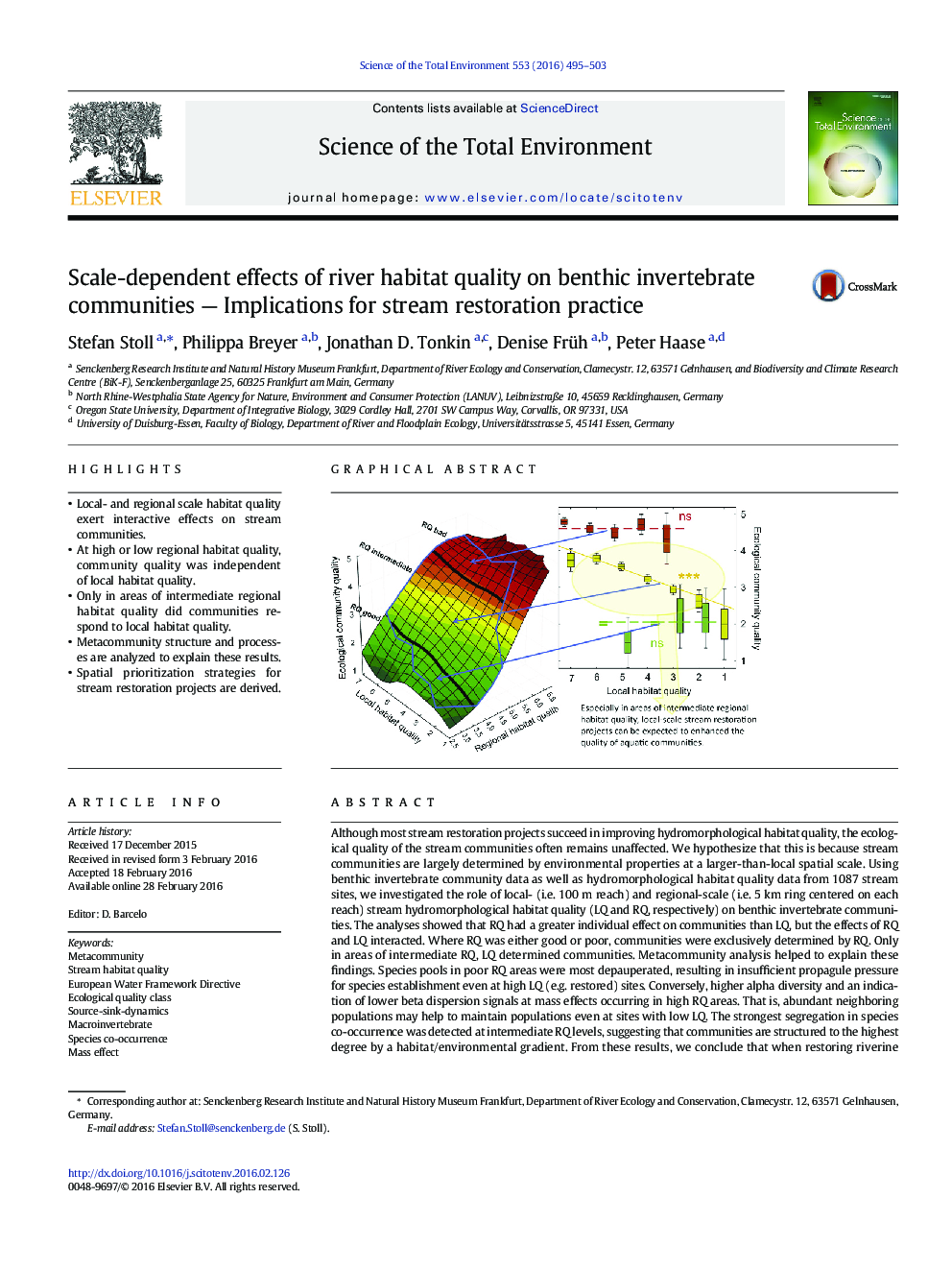| Article ID | Journal | Published Year | Pages | File Type |
|---|---|---|---|---|
| 6322367 | Science of The Total Environment | 2016 | 9 Pages |
â¢Local- and regional scale habitat quality exert interactive effects on stream communities.â¢At high or low regional habitat quality, community quality was independent of local habitat quality.â¢Only in areas of intermediate regional habitat quality did communities respond to local habitat quality.â¢Metacommunity structure and processes are analyzed to explain these results.â¢Spatial prioritization strategies for stream restoration projects are derived.
Although most stream restoration projects succeed in improving hydromorphological habitat quality, the ecological quality of the stream communities often remains unaffected. We hypothesize that this is because stream communities are largely determined by environmental properties at a larger-than-local spatial scale. Using benthic invertebrate community data as well as hydromorphological habitat quality data from 1087 stream sites, we investigated the role of local- (i.e. 100Â m reach) and regional-scale (i.e. 5Â km ring centered on each reach) stream hydromorphological habitat quality (LQ and RQ, respectively) on benthic invertebrate communities. The analyses showed that RQ had a greater individual effect on communities than LQ, but the effects of RQ and LQ interacted. Where RQ was either good or poor, communities were exclusively determined by RQ. Only in areas of intermediate RQ, LQ determined communities. Metacommunity analysis helped to explain these findings. Species pools in poor RQ areas were most depauperated, resulting in insufficient propagule pressure for species establishment even at high LQ (e.g. restored) sites. Conversely, higher alpha diversity and an indication of lower beta dispersion signals at mass effects occurring in high RQ areas. That is, abundant neighboring populations may help to maintain populations even at sites with low LQ. The strongest segregation in species co-occurrence was detected at intermediate RQ levels, suggesting that communities are structured to the highest degree by a habitat/environmental gradient. From these results, we conclude that when restoring riverine habitats at the reach scale, restoration projects situated in intermediate RQ settings will likely be the most successful in enhancing the naturalness of local communities. With a careful choice of sites for reach-scale restoration in settings of intermediate RQ and a strategy that aims to expand areas of high RQ, the success of reach-scale restoration in promoting the ecological quality of communities can be greatly improved.
Graphical abstractDownload high-res image (367KB)Download full-size image
